Stocks Decline, Bitcoin Surges, and Gold Consolidates Amid Economic Uncertainty | Daily Market Analysis

Key events:
- Japan - GDP (QoQ) (Q4)
- UK - BoE MPC Member Mann
On Friday, the S&P 500 and Nasdaq experienced a decline after reaching record highs earlier in the session. High-flying chip stocks reversed course, and a mixed labor market report, featuring more new jobs than anticipated coupled with a rising unemployment rate, contributed to the market's retreat.
Though the S&P and Nasdaq briefly achieved intraday record highs, they began losing momentum late morning. The Philadelphia Semiconductor Index notably underperformed, concluding the day with a 4% decline after reaching an intraday record high. The Dow Jones Industrial Average fell by 68.66 points, the S&P 500 lost 33.67 points, and the Nasdaq Composite dropped 188.26 points.
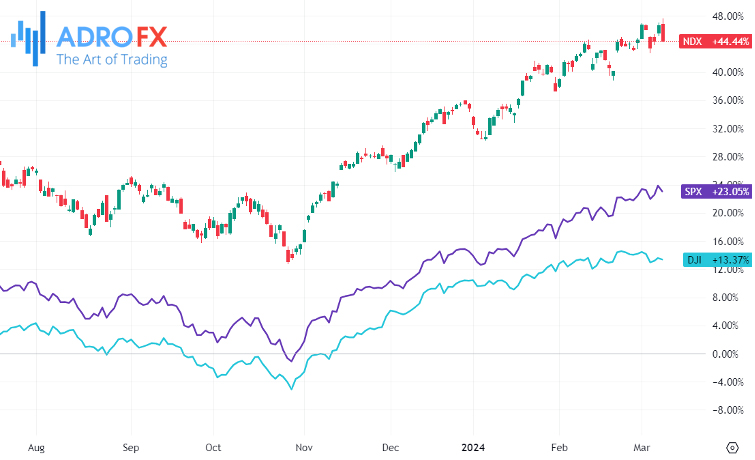
In the cryptocurrency realm, Bitcoin soared to a new all-time high surpassing $70,000, driven by investor demand for recently launched US spot bitcoin ETFs and expectations of a global decline in interest rates. Billions of dollars flowed into ETFs in recent weeks, and anticipation of an Ethereum blockchain upgrade and a bitcoin "halving" event in April further supported the market.
Despite concerns arising from the "crypto winter" following the 2021 boom, where bankruptcies and collapses affected investors, a fresh influx of money seems undeterred. Crypto enthusiasts argue that the industry has matured, but regulators remain cautious. Investors are now pondering the potential magnitude of this surge and questioning whether the current situation differs from previous trends.
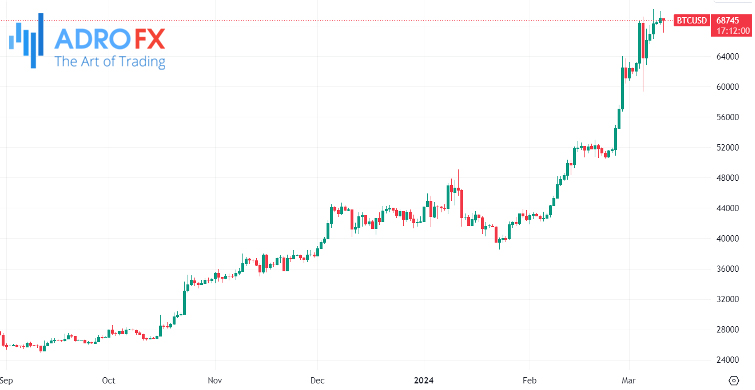
The USD/CHF pair is showing modest gains below the 0.8800 psychological barrier in the early European session on Monday. The expectation of a potential interest rate cut by the Federal Reserve this year is putting some downward pressure on the US Dollar, acting as a headwind for the pair.
On the Swiss side, ongoing geopolitical tensions in the Middle East and economic uncertainties in major countries could increase safe-haven demand, benefiting the Swiss Franc. In the Middle East, Hamas leader Ismail Haniyeh accused Israel of obstructing cease-fire talks, while tensions are escalating in Russia and its neighboring territories, raising concerns about potential war escalation beyond Ukraine.

Gold prices are oscillating within a range during the Asian session on Monday, consolidating after a recent rally to around $2,200, marking a fresh record high on Friday. The spike in the US unemployment rate in February has reinforced expectations of a Fed interest rate cut in June, keeping US Treasury bond yields low. This has hindered the US Dollar's recovery and acted as a tailwind for gold.
Despite overbought conditions on the daily chart, bullish traders seem hesitant to place fresh bets on gold ahead of the release of the latest US consumer inflation figures on Tuesday. The data will play a crucial role in shaping expectations about the Fed's rate-cut path, influencing USD demand and potentially providing new momentum for gold. Fed rate cut expectations, along with a cautious market mood, may continue to support the safe-haven XAU/USD and limit any corrective slide.
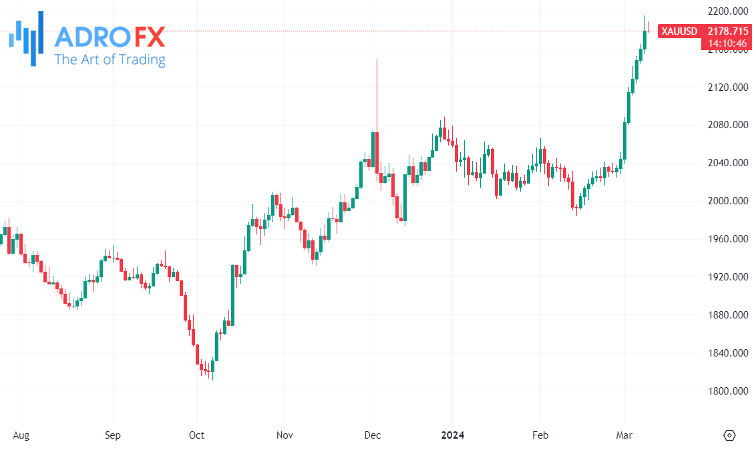
The Japanese Yen has rallied to its highest level since early February against the US Dollar on Friday amid expectations of a possible shift in the Bank of Japan's policy stance. Investors anticipate another substantial pay hike in Japan, driving demand-driven inflationary pressure and potentially leading to the end of negative interest rates at the March 18-19 BoJ meeting. This supports the JPY and keeps the USD/JPY pair depressed during the Asian session on Monday.
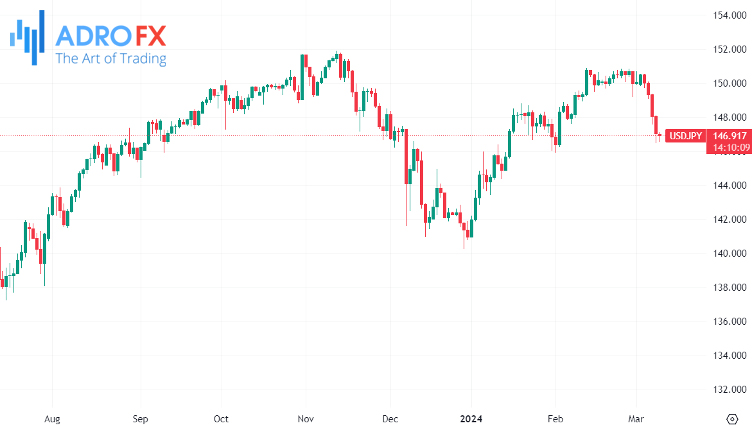
The Australian Dollar broke its three-day winning streak on Monday, mainly due to a weaker US Dollar. The S&P/ASX 200 Index witnessed a decline at the start of the week, pulling back from all-time highs as investors booked profits, especially in the materials and healthcare sectors. The decline in technology stocks on Wall Street on Friday also contributed to tempering the strength of the AUD/USD pair.
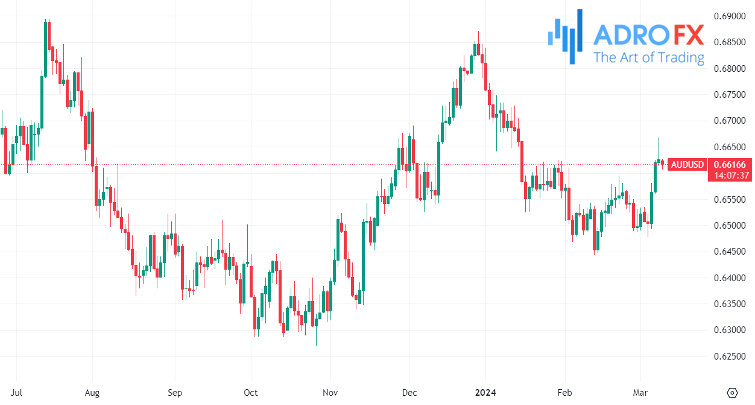
Looking ahead, investors are keenly observing Tuesday's US inflation data to gauge when the Federal Reserve might initiate interest rate cuts. Economists anticipate a 0.4% rise in February's consumer price index after a faster-than-expected increase of 0.3% in January. Despite Fed Chair Jerome Powell hinting at possible rate cuts later in the year, the exact timing remains uncertain.
Additional economic indicators scheduled for release include Thursday's retail sales data for February, an expected rebound of 0.8% after a similar decline in the previous month. The economic calendar also includes updates on industrial production, consumer sentiment, and weekly initial jobless claims.
The UK will release its latest jobs report on Tuesday, with a focus on wage growth amid speculation about the timing of a potential rate cut by the Bank of England. In the Eurozone, industrial production data for January will be released, with a strong reading seen as an encouraging sign for first-quarter GDP growth after December's report showed a significant increase, reversing a year-long trend of declines.









